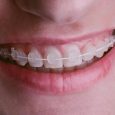With all the different types of face masks available, it can be hard to know which kind to use. You have to juggle your desire to be comfortable with the effectiveness of the material each mask is made of. Plus, some mask alternatives do more harm than good.

To give you a better idea of what kind of mask you should be wearing, keep reading. We’re breaking down each mask and mask alternative.
Disposable Masks
Disposable, surgical masks are thin, single-layer masks that you can buy by the box from most stores. They’re usually blue and white with soft, stretchy bands that curve around your ears.
They filter out about 60% of inhaled particles. They’re mostly used to keep aerosolized droplets, sprays, and splatters from hitting the sensitive membranes of your mouth and nose.
These masks aren’t meant to be worn more than one time. After each use of a disposable surgical mask Canada, you need to throw it away and get a fresh one. Otherwise, you’re risking contaminating yourself with whatever harmful substance the mask prevented in the first place.
Face Shields
Face shields are large, clear plastic barriers that are usually worn like visors. They drop down and create a face-to-face barrier between the wearer and the outside world.
However, there is no evidence that shows that these types of masks actually protect the wearer from any inhaled viruses.
In fact, the only thing that face shields really protect against is a splatter event to the face. If someone with a virus stood in front of you and sneezed, it would protect against any splatter. But the other inhaled particles would still get to you from under the barrier.
Gaiters and Bandanas
Gaiters and bandanas are makeshift mask alternatives. A bandana is worn over the mouth and nose and has been used for centuries to keep dust and particles out of the respiratory system.
There is some evidence that a bandana can protect against droplets and spray. It cuts the distance of the spread of cough in half.
Gaiters are a tube of fabric that goes around the neck. The wearer can pull the tube up over their nose and mouth to protect them from the cold.
There is some evidence that supports the fact that gaiters made from synthetic material can actually cause bacteria to aerosolize and spread even more. Gaiters are not an effective form of protection against droplets and spray.
Cloth Masks
Cloth masks can be made at home or bought at a store. They vary in design and effectiveness. The different material each mask is made of is important too. If you want to make sure the material you use for face masks is effective, make sure you find out more through research before starting.
In general, make sure you’re using a tightly woven cotton material and that you’re doubling up on the fabric.
Filtered Cloth Masks
Some cloth masks come with an extra pocket so you can add a filter. Almost anything can work as an effective filter in this case. You can use a folded-up tissue, napkin, paper towel, or even a disposable surgical mask to help the cloth filter out particles.
A polypropylene material, like the fabric used in upholstery, can hold a charge. This charge can help trap small particles and increase the efficiency of the filter.
At the end of each day, dispose of the filter and wash the mask.
Do not wear a mask that has an exhalation vent or valve. These masks may help protect you from outside particles, but if you’re carrying a virus you’re still going to spread it to others.
Cone-Style Masks
Cone-style masks fit over your mouth and nose with a strip of exposed metal on top so you can mold it to your nose.
These masks are usually used during construction projects to stop debris and dust from entering your airways.
These masks aren’t as effective at keeping droplets and spray away from your sensitive membranes as cloth masks made of quilting cotton. However, they are more effective than a bandana.
N95 and KN95 Masks
N95 masks pack the most protective punch when it comes to viruses like COVID-19. These masks are specially designed to filter out 95% of the particles from the air.
The other masks on this list are meant to protect others around you from breathing in your droplets. The N95 mask actually helps protect you.
N95 masks are hard to come by, especially during the modern-day’s COVID-19 outbreak.
KN95 masks are similar to N95 masks, except they are built to the Chinese government’s specifications, while N95 masks are built to the United States government’s specifications. They both filter out 95% of small particles.
The Best Face Mask for Everyday Wear
If you aren’t a medical professional or you don’t work in close contact with people who are sick, you should stick to disposable surgical masks or cloth masks for everyday wear. N95 masks are in short supply and should be saved for front-line workers and health professionals. They are also important tools for people with extremely compromised immune systems.
The longer the current pandemic goes on, the more people are finding creative ways to wear cloth masks comfortably. There are pieces made to fit around the wearer’s head so that their ears don’t become fatigued by the pull of the straps.
Different Types of Face Masks
Even as restrictions are lifted and more places are opening up, it’s important that we continue to wear face masks to protect ourselves and others from viruses. As we’ve seen, even small viruses can turn into deadly pandemics that can knock nations out and disrupt our lives in unimaginable ways.
Study these different types of face masks and pick one that works best for you. Then wear it every time you go out in public. Make sure you’re following proper handwashing procedures as well.
We’ll get out of this as long as we work together!
For more health and wellness information, keep reading.




